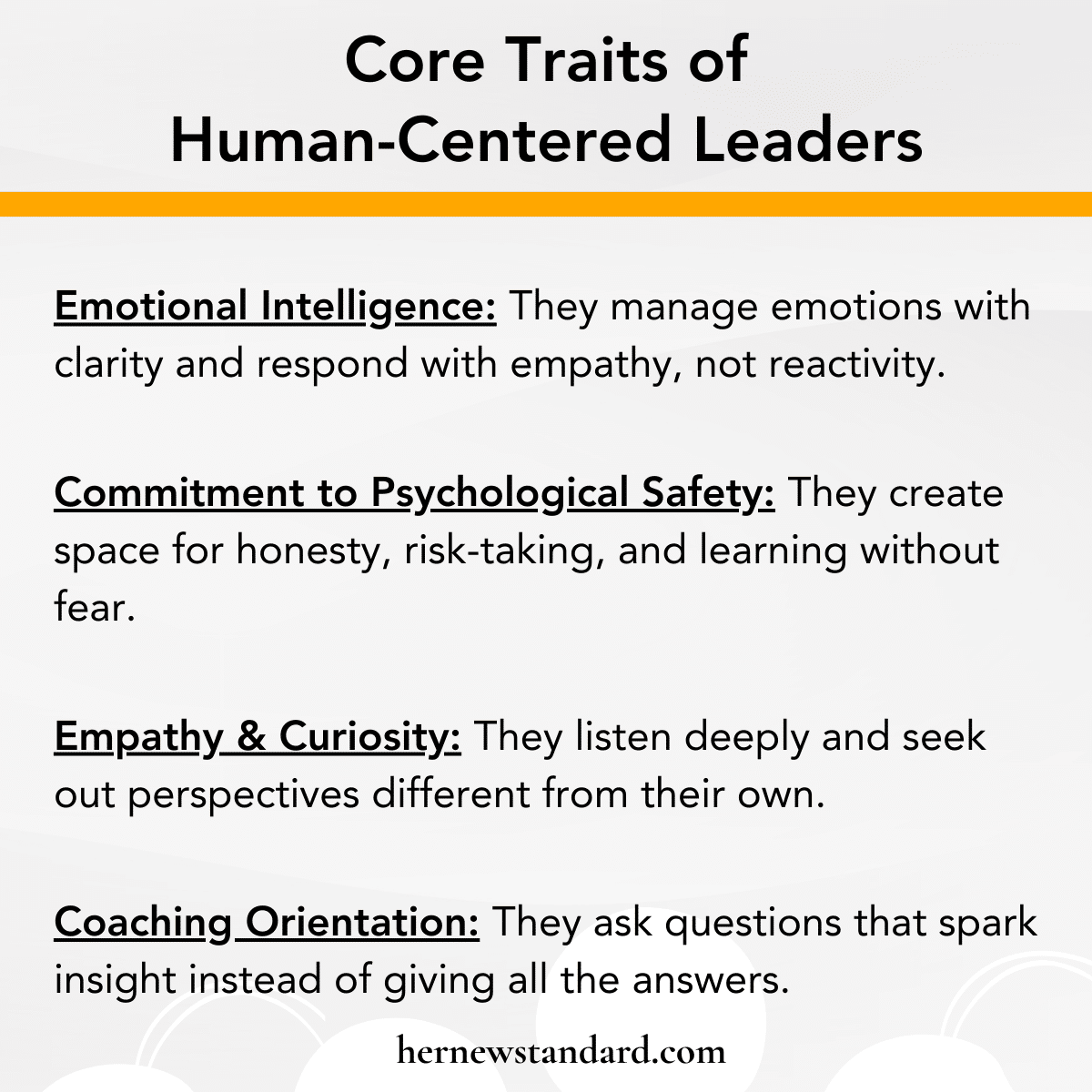What Is Human-Centered Leadership and Why It Matters
In the early days of the pandemic, a senior leader at a global financial services firm we work with started every team meeting with a new question: “How are you, really?”
At first, her team, comprised of portfolio managers, risk analysts, and compliance leads, wasn’t sure how to respond. They were used to starting meetings with market updates and performance metrics. Now, they were being asked about their well-being.
The shift was subtle but powerful. Over time, team members began to share more openly. One admitted they were caring for a sick parent and struggling to stay focused; their manager quietly redistributed deadlines. Another voiced burnout from back-to-back virtual meetings; the team reworked its norms to allow more space and flexibility.
The result? The team not only hit their quarterly goals, they did so with higher engagement and zero turnover during one of the most volatile periods in recent memory.
This is human-centered leadership in action.
At its core, it places people (not profit margins, not processes) at the heart of decision-making. It doesn’t abandon accountability or results. Instead, it recognizes that the most sustainable results are achieved when people feel seen, heard, and supported. Right now burnout is high. Trust is low. And expectations are shifting fast. The leaders who center people, not just performance, are the ones who will move their organizations forward.
Why This Matters More Than Ever
Despite the growing focus on workplace well-being, the reality on the ground tells a different story. According to Deloitte’s 2024 Global Human Capital Trends report, only 43% of workers say their organizations have left them better off than when they started. That means the majority of employees don’t feel like work is improving their lives, and that’s a problem for retention, performance, and trust.
It’s not that organizations don’t care. Many do. But there’s often a gap between intention and impact. Human-centered leadership helps close that gap by rethinking how we define success, how we show up for our teams, and how we build workplaces where people can actually thrive. That’s not just the future of leadership. It’s what today’s workforce is already asking for.
What Sets Human-Centered Leaders Apart
If traditional leadership focuses on output, human-centered leadership focuses on the conditions that make great output possible. What does that look like in practice?

- Emotional Intelligence: The ability to understand and manage your own emotions and those of others. Leaders with high EQ can defuse tension, navigate conflict, and communicate with clarity.
- Psychological Safety: Employees feel safe sharing ideas, asking questions, or admitting mistakes without fear of judgment. A psychologically safe culture allows for risk-taking, creativity, and honest feedback.
- Empathy and Curiosity: These leaders ask, What might I be missing? They seek out different perspectives and value lived experiences, especially those unlike their own.
- Coaching Orientation: Instead of telling people what to do, human-centered leaders ask powerful questions, listen deeply, and encourage reflection and growth.
These aren’t soft skills. These are the core competencies that drive innovation, collaboration, and retention.
A Real-World Example: Human-Centered Leadership with Ginni Rometty
When Ginni Rometty became CEO of IBM, she faced a company in transition, needing to reinvent itself amid rapid technological change. She made empathy and inclusion central to her leadership style, focusing on listening deeply to employees and customers alike.
Rometty invested heavily in reskilling IBM’s workforce, recognizing that people’s growth was key to the company’s future. She emphasized psychological safety and encouraged managers to coach their teams rather than just manage tasks.
Under her leadership, IBM transformed its culture, focusing on collaboration and continuous learning. Employee engagement improved, innovation accelerated, and IBM successfully shifted towards cloud computing and AI services.
Rometty’s approach reveals that when leaders truly invest in their people, they unlock a competitive edge that powers both innovation and sustained success.
The Benefits: Why Human-Centered Leadership Pays Off
When leaders prioritize people, the benefits show up everywhere:
- Stronger engagement: Employees who feel cared for are more loyal and motivated.
- Reduced burnout: Teams with psychologically safe environments experience lower stress and higher satisfaction.
- Better retention: In a Gallup study, organizations with high employee engagement saw 23% higher profitability and 43% lower turnover.
- More innovation: When people feel safe to share unpolished ideas, creativity flows.
With employee disengagement draining an estimated $8.8 trillion worldwide, human-centered leadership is a critical business imperative.
How to Practice Human-Centered Leadership: A Three-Tier Framework
This leadership style isn’t reserved for the C-suite. It can be practiced at every level, starting with the self.
1. Self-Leadership: Know Yourself First
Human-centered leadership starts inward. It requires honest self-awareness: What drives you? What derails you? How do you show up under pressure? Practices like reflection, journaling, coaching, and mindfulness help leaders understand their blind spots and grow.
At Her New Standard, we see leaders gain significant credibility when they stop trying to “perform leadership” and start embodying it from a place of values and intention.
2. Team Leadership: Build Trust and Psychological Safety
The next layer is your team. Human-centered leaders ask more than they tell. They create cultures of accountability and compassion. They model vulnerability, owning when they don’t know something or when they’ve made a mistake, and make space for others to do the same.
They also cultivate feedback-rich environments. Not with performative “feedback sessions,” but with ongoing dialogue rooted in mutual respect.
3. Organizational Leadership: Design for Humanity at Scale
Finally, human-centered leadership becomes truly powerful when it’s woven into the systems and culture of an organization. That means policies that support well-being, structures that encourage diverse voices, and investments in professional development not just for rising stars, but for every employee.
It’s about aligning culture with purpose. Not once. Continually.
Sustaining Human-Centered Leadership Over Time
It’s easy to show up with empathy once. The challenge is making it a leadership habit. To sustain a human-centered culture:
- Normalize reflection: Build in time for team and personal retrospectives focused on insights gained.
- Reward what you value: Recognize leaders for how they lead, not just what they deliver.
- Invest in development: Leadership is a skill that requires practice. Coaching, training, and peer support are critical.
- Measure well-being: Don’t just track productivity. Track how people feel about working in your organization.
Final Thoughts: Leading with Impact
Human-centered leadership doesn’t mean softening expectations or dodging tough talks. It means creating environments where people truly flourish.
At Her New Standard, we’ve seen firsthand how this leadership style enhances not only teams but careers, organizations, and lives.
As you reflect on your own leadership, ask:
Am I building performance through pressure? Or through trust, empathy, and intention?
Because the most effective leaders don’t manage people. They center them.
Ready to lead with impact?
Enjoyed this post? You might also like…




